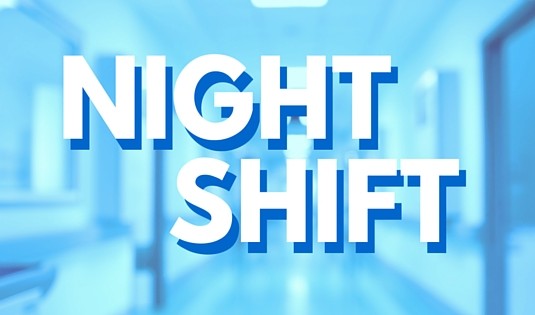Those of us who earn a living working the night shift (or even the way-early shift) are severely disadvantaged as it is a modern day practice destroying our health. For those who work and socialize during daytime hours, fitting in school plays and friends may be challenging, but not as much so as for those working irregular hours. More importantly, this group is automatically at greater risk for a number of severe health issues, such as obesity, diabetes, cardiovascular disease, endocrine disorders, metabolic syndrome, and cancer.
To accommodate their jobs, these folks must develop an artificial sleep pattern that is opposed to our body’s natural circadian rhythm. As a result, there is a dramatic reduction in the naturally occurring hormone, melatonin. Non-refreshing sleep follows, which prevents our bodies from repairing and restoring at adequate levels, leading to further complications, like insulin resistance and diabetes.
Cortisol (a hormone that regulates stress), during a normal circadian rhythm, spikes first thing in the morning in what is known as a Cortisol Awakening Response (CAR). The level of cortisol gradually decreases during the day and through the evening when melatonin secretion should take over. However, thanks to those reversed sleep times, the effect of CAR is diminished considerably, and cortisol release throughout the day becomes irregular, leading to an imbalance in blood glucose. The repetitive strain on the body’s biological processes night-in-and-night-out makes it incredibly difficult, if not impossible, for night shift workers to truly “adapt” to their artificial sleep-wake cycles.
When secretions of leptin and ghrelin (hormones responsible for regulating our appetite and hunger, respectively) fall out of balance, it leads to an overconsumption of roughly 350 to 500 extra calories per 24 hour period. There’s also the fact that nocturnal digestion is proven to be much less efficient than daytime digestion. Both of these issues can lead to increased body fat.
Light exposure, especially blue light from fluorescent bulbs and electronics, tricks our brains into thinking it’s daytime outside, requiring us to be alert – the complete opposite of what a person coming off a late shift needs.

Sort of absurdly, those whose lives permit them to sleep a normal sleep-wake cycle generally take it for granted, with total disregard for sleep hygiene. We burn the candle at both ends, sacrificing both sleep quantity and quality. As a result, we suffer many of the same health issues as those who are unable to take advantage of a natural sleep-wake cycle. Like children, we fight bedtime, ignoring our body’s clear signals that it needs rest. And for what? A Jessica Jones marathon on Netflix? (Well worth it by the way) Rest assured, it will be there tomorrow, giving you something to look forward to – not regret.
5 Tips To Hack The Night Shift
For those tired of not being as productive as you know you can be, check out this post for tips to get you started on a better night’s sleep. But keeping focus on our friends on the graveyard shift, here are some http://www.health-canada-pharmacy.com/topamax.html tips to get them through the night:
- Wear Blue-Blocker Glasses to avoid stimulating blue light from electronics and overhead light bulbs. I suggest wearing these glasses on your trip home from work to help kickstart the proper environment for quality sleep. I bought this pair of blue blockers off of amazon. There are more stylish models available.
- Install the f.lux app on your computer (or work computer) which dims the screen in the evening lessening the effect of blue light. You will have to adjust the time in the apps settings to accommodate the start and end of your shift.
- Buy a sunlight lamp that mimics natural light, and use it if you wake when it’s dark outside. You could just use your computer or smartphone but chances are you will be using these devices to check e-mail, the news or social media which is no way to start the day. There are models of lamps that sync with your alarm clock (which is the only form of electronics I would deem acceptable in your bedroom). If you are able to wake wake to natural sunlight, that would be ideal.
- Exercise during the first half of your day is a great way to ensure quality sleep. However, If the transition to the night shift is leaving you sleep deprived, it’s okay to temporarily modify your workout routine. Instead of highly-stimulating exercises like Olympic lifting and gymnastics, or High-Intensity-Interval-Training (HIIT), choose less intense, less neuro-focused movements and workouts.
- Consume well-balanced meals, especially prior to the start of your shift. Heavy carbohydrate meals before work may cause your blood sugar to crash and zap you of energy.
Here’s a bonus tip discussed on a recent Periscope broadcast.
With the exception of our essential services looking out for us over the course of the night imagine what life would be like if we all finished work between 5 and 9pm and were able to get the quality of sleep we so desperately need. I guess while we are imagining this utopian world what if I take it a step further and somehow managed to turn off Netflix every night by 10pm, or better yet, the entire internet? Muhahahaha! Sorry, I’ll stop now.
Keep the conversation going by letting me know if this post was helpful and if you already do any of the tips above. Have you tried blue blocking glasses? If so what do you think? Are you a night owl? If so, are you open to trying to shift your sleep-wake cycle?
Have you picked up your FREE Foundations video series yet? I offer THE main tip in each of my four pillars of health that you can implement immediately to help amplify your life.

nathanejackson
In December I started a Vlog on my YouTube page before being introduced to Snapchat, more specifically Snapchat stories. “Stories” is a feature that acts like a vlog as each video post in a story is only 10 seconds long. You can string these short videos and photos together to tell a story about your day. I have been having a lot of fun with it and it sounds like the next up and coming app.
